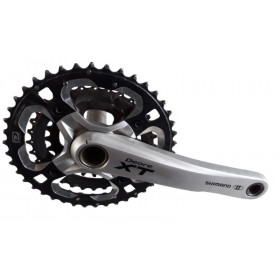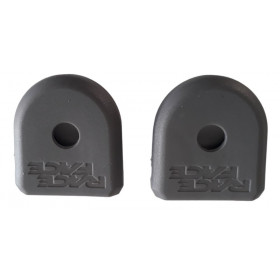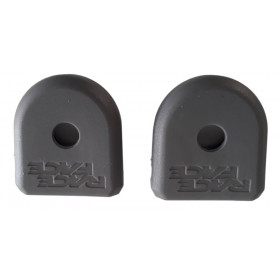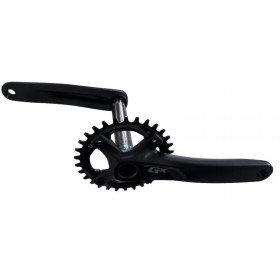-
-
Carbon cranks boot Race Face grey
- €6.00
- €14.99
-
Carbon cranks boot Race Face Sram...
- €6.00
- €14.99
-
Sram gx 1000 X-SYNC crankset fat bike...
- €106.25
- €153.99
Showing 1-4 of 4 item(s)
The crankset of an enduro mountain bike is an essential component of the transmission that helps transfer the power generated by the rider to the wheels of the bike. Here is a description of its function, its characteristics and the associated standards:
Function :
1. Power transfer:
The crankset transforms the rotary motion of the pedals into linear motion that moves the bike forward.
2. Speed variation:
Enduro mountain bike cranksets can be equipped with different chainrings that allow the cyclist to change speeds and adapt to the different types of terrain encountered when practicing enduro.
Features :
1. Number of trays:
Enduro MTB cranksets can be configured with one, two or three chainrings. Single chainring setups are becoming more popular in enduro due to their simplicity and lightness, but some dual chainring setups are also common to provide a greater gear range.
2. Size of trays:
The chainrings of an enduro mountain bike crankset can vary in size, usually expressed in number of teeth. Chainring sizes can be chosen based on the rider's preferences and the type of terrain they plan to ride on. Larger chainrings provide higher speed, while smaller chainrings provide better ease on climbs.
3. Length of cranks:
Crank arms can vary in length, typically between 165mm and 175mm. The length of the cranks can influence the cyclist's pedaling power, comfort and efficiency.
4. Bottom Bracket Compatibility:
Enduro mountain bike cranksets must be compatible with the type of bottom bracket used on the bike. Common bottom bracket standards include BSA threaded shell, PF30 press-fit shell, BB92 press-fit shell, among others.
Standards:
Bottom bracket interface:
Enduro MTB cranksets can be equipped with different bottom bracket interfaces, such as the ISIS standard, the Octalink standard or the Hollowtech II standard. It is important to choose a crankset that is compatible with the bottom bracket interface of the bicycle frame.




